John Hurrell – 7 June, 2012
Crooks' two videos and nine lambda prints come from his invented process of ‘time slice'. In this variation he has filmed rotating objects at high speed and taken from each frame a section one pixel wide, and blended them in sequence to form a composite image. Sometimes they are obviously botanical in inspiration; on other occasions they seem to be architectural columns, figures draped in fabric, glisteningly wet ceramics, or like open books spliced into black flowing hair.
Daniel Crooks is mainly known in this country for the remarkable exhibition Everywhere Instantly that Justin Paton organised of his videos for Christchurch Art Gallery almost four years ago. Since then his distinctive digital work has appeared in an international video group show at Starkwhite in Auckland, and later with a public talk organised by Pontus Kylander. Now we are seeing this, the second of two solo presentations at Two Rooms.
In Christchurch, while some of the videos were coloured, shimmering treatments of fragmented moving figures - like the two works he last showed in Two Rooms - there were also some earlier black and white videos of slow moving plantlike forms in the Imaginery Object series. There are two of these now downstairs at Two Rooms, along with some related digital prints.
These stark ‘botanical /architectural’ images vary in speed and in their delicate manner of unravelling of form. Movement of these transmuting leaf / tendril / stem forms sometimes is just a gentle shadowy blur that you initially remain uncertain of. Like some performance art that specialises in very very slow motion. Right on the threshold of delectability. Then suddenly things speed up: moving forms and moving light tracking along forms.
Crooks’ two videos and nine lambda prints come from his invented process of ‘time slice’. In this variation (there are several) he has filmed rotating objects at high speed and taken from each frame a section one pixel wide, and blended them in sequence to form a composite image where the vertical y axis represents space and horizontal x, time. Sometimes they are obviously botanical in inspiration; on other occasions they seem to be architectural columns, figures draped in fabric, glisteningly wet ceramics, or like open books spliced into black flowing hair.
As lambda prints these digital stills have a subtle three dimensionality that is hard to describe, almost like lenticular postcard depth but not. The turns of these twisting forms sometimes appear to be made with raised surfaces of paint, as if they were not photographs but images created with thick striated paint applied onto the paper surfaces with a machine. In these puzzling bending stems, tonal contrast creates the illusion of depth, but this is accentuated by the blur of the glass layered on top of it. Sometimes you are looking on the surface of the picture plane; other occasions you are peering in and through it, your explorative eye moving around the sides of their curved edges and not at the form. It becomes a sculpture, not a photograph.
These stark images might at first glance seem too restrained, too understated as static photographs, and too formal - as if obviously shallow, superficial and one dimensional. Yet they grow on you and you soon realise the optical experience Crooks has created is surprisingly complicated. Image, paper surface, glass, and digital treatment blend together to make viewing these objects quite an enigmatic activity, something very difficult to analyse. It is a remarkable show.
John Hurrell
Recent Comments
John Hurrell
Excellent point Roger - esp. the botanical connection. They also seem related to some of Hiroshi Sugimoto's images taken of ...
Roger Boyce
The prints bring to mind the precision and unapologetic beauty of German photographer Karl Blossfeldt's (1865-1932) botanical works.

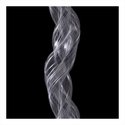

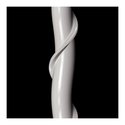
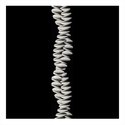
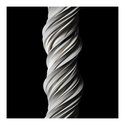
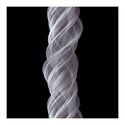

 Advertising in this column
Advertising in this column Two Rooms presents a program of residencies and projects
Two Rooms presents a program of residencies and projects



This Discussion has 2 comments.
Comment
Roger Boyce, 5:44 p.m. 9 June, 2012 #
The prints bring to mind the precision and unapologetic beauty of German photographer Karl Blossfeldt's (1865-1932) botanical works.
John Hurrell, 1:04 a.m. 10 June, 2012 #
Excellent point Roger - esp. the botanical connection. They also seem related to some of Hiroshi Sugimoto's images taken of plaster casts, but richer in associations.
Crooks is a great New Zealand-born talent. An astounding artist. He should have been a Walters Prize contender years ago.
Participate
Register to Participate.
Sign in
Sign in to an existing account.